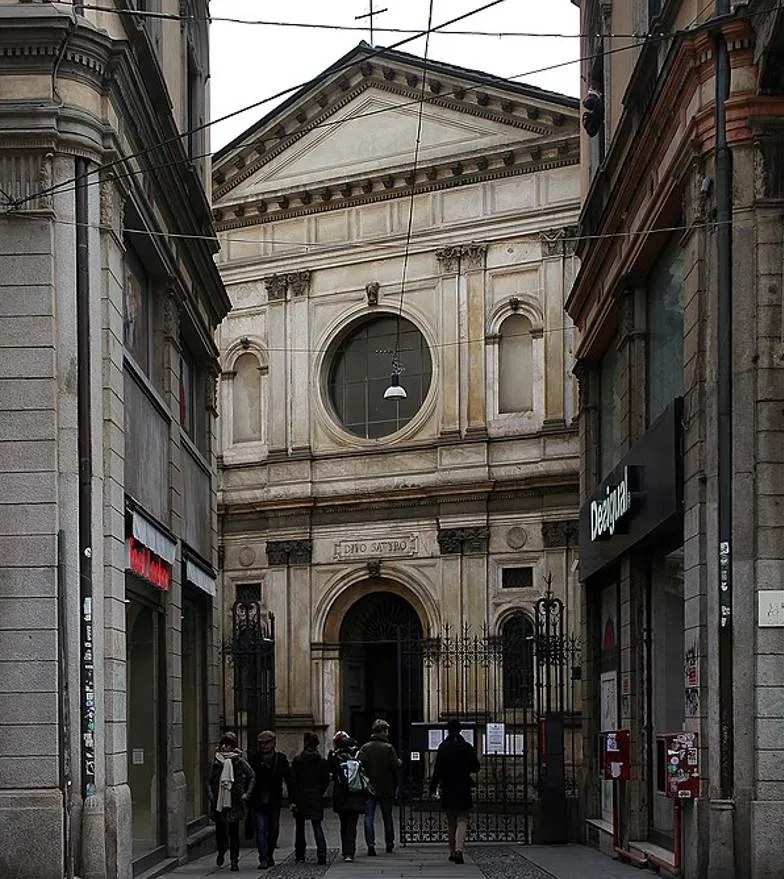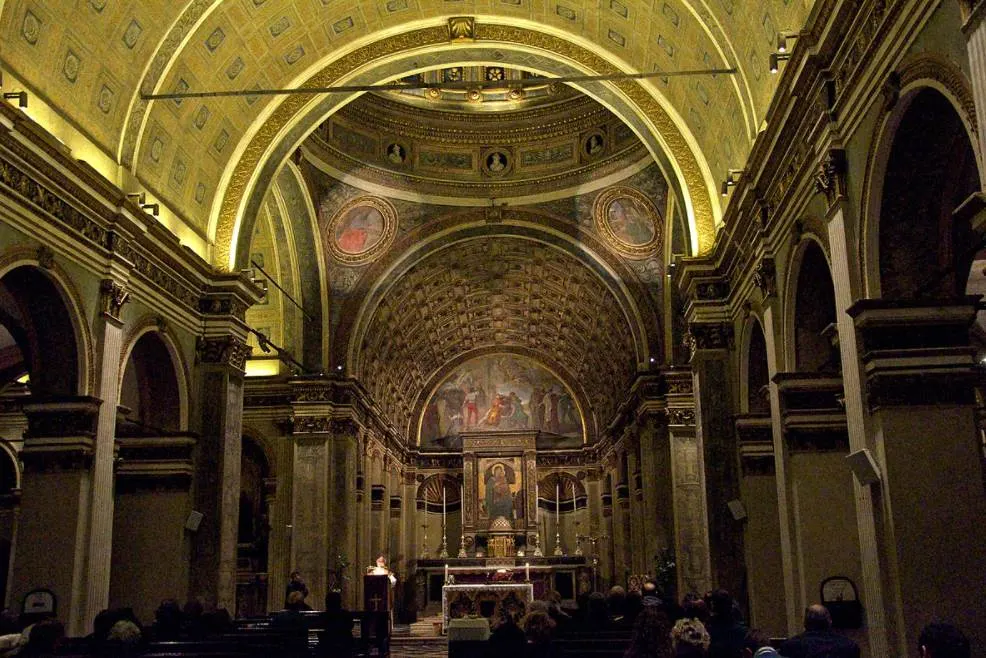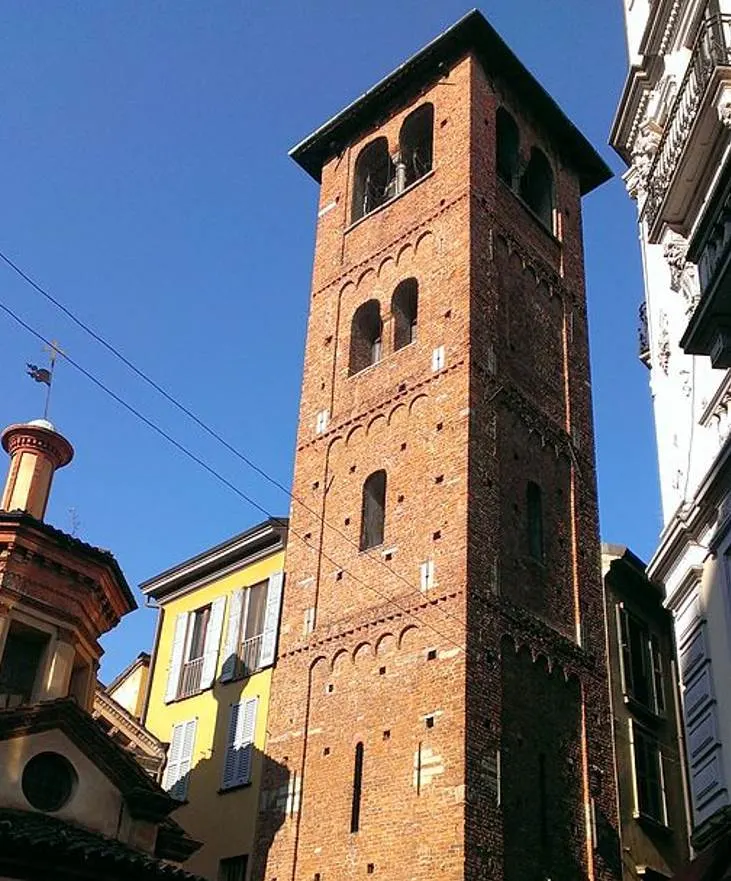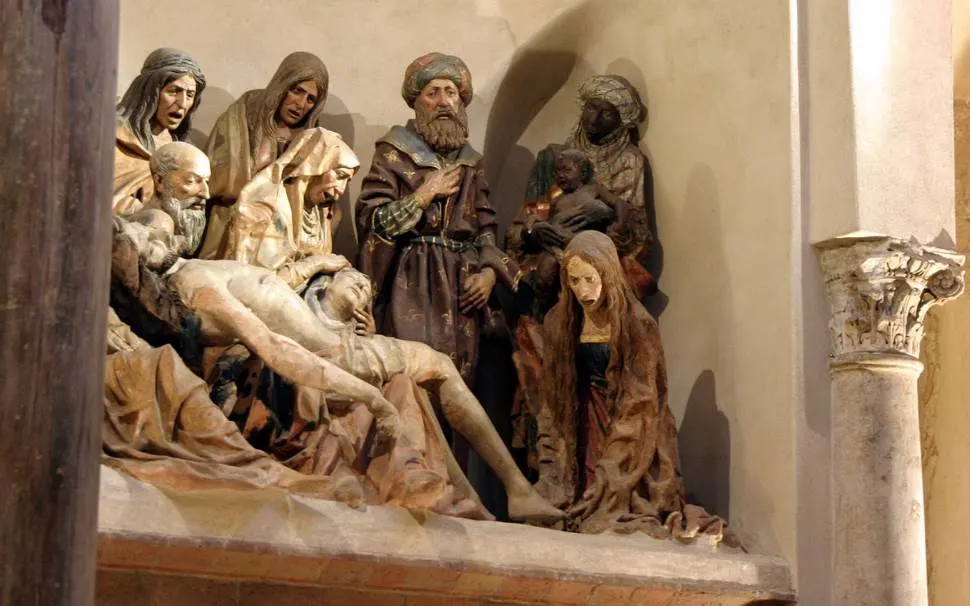When Renaissance artist and renowned architect Donato Bramante (1444-1514) was left with too little space to build an apse at the end of a church in Milan, he did something remarkable to solve the problem.
In this article, you’ll discover some of the most interesting facts about Santa Maria Presso San Satiro, a church with a revolutionary architectural feature that is credited to Bramante.
1. It’s located just southwest of the most famous landmark in Milan
Santa Maria Presso San Satiro is a Renaissance church located in the heart of Milan, the capital of the Lombardy region in northern Italy.
The church can be found in a narrow street just a few blocks away from Milan Cathedral, one of the most astounding Gothic cathedrals in the world and the most famous landmark in the city.

2. A 9th-century shrine is housed inside the Renaissance church
The main reason why it’s located so close to the historical heart of the city, which the Duomo is as the city was built around the location ever since Roman times, is because it’s the location of an early-medieval shrine.
Archbishop of Milan Anspertus erected a place of worship on this spot to honor Saint Satyrus (331-378), the brother of Saints Ambrose (340-397), and Marcellina (327-397).
Especially Saint Ambrose has played a remarkable role in the history of the city. He was a Roman Governor who miraculously became the Bishop of Milan in the year 374. His brother Satyrus unexpectedly died shortly after in the year 378 and was venerated by his brother.

3. The church was completed in the late 15th century
The medieval shrine was nothing more than a little chapel so the rulers of Milan in the late 15th century, Duchess Bona di Savoia and Duke Gian Galeazzo Sforza, decided to build a church on this location.
The relatively small church has two aisles that are supported by barrel vaults. The crossing is formed by hemispherical domes at the crossing with the transept.

The exterior features a typically Renaissance façade designed by Giovanni Antonio Amadeo (1447-1522), a sculptor and architect who spent quite some time working on the design of Milan Cathedral as well.

4. One Romanesque feature of the former church still stands today
Although the original 9th-century shrine dedicated to Saint Satyrus was primitive, it was expanded multiple times throughout the Middle Ages.
The structures that were replaced by the Renaissance church were designed in the Romanesque architectural style, and one element still stands today, the Romanesque bell tower referred to as the “Satiro Campanile.”.

5. The church is world-famous for Bramante’s remarkable desing feature
The church is relatively small and a serious problem arose during the construction. The shrine of Saint Satyrus is located near the end of the building and only 90 centimeters (3.0 feet) were left to work with to build the apse.
To resolve this issue, Donato Bramante didn’t even try to construct an apse with this limited space so he came up with an architectural feature now referred to as a “trompe-l’œil.” This translates from French to “mistake of the eye,” or in other words, an optical illusion.
He simply painted this optical illusion to the altar wall of the church to make it appear as if the apse is much bigger than it is. It’s one of the first examples of this technique in architecture and it has been repeated countless times in history.

More interesting facts about Santa Maria Presso San Satiro
6. Although the gilded interior of the church still looks pretty impressive today, it looked even more impressive upon completion in the late 15th century.
White paint was used to accompany the gold color used for the interior decoration to accentuate it further, and the sidewalls of the church were decorated by a wide variety of paintings by Ambrogio Bergognone (the 1470s-1523).
These paintings have since been moved to one of the most popular museums in Milan, the Pinacoteca di Brera.
7. Donato Bramante only moved to Milan in the year 1474 and quickly became one of the most renowned architects in the city.
He is credited with introducing Renaissance architecture in Milan and he designed multiple buildings here, including the Cloisters of the Basilica of Sant’Ambrogio and the tribune of Santa Maria delle Grazie.

Bramante eventually became the court architect of Duke Ludovico Sforza during the 1490s, a man who also became the patron of Leonardo da Vinci during his period in Milan.
8. Early sources documenting the construction of Santa Maria Presso San Satiro claim that Bramante had a major role in the design of the church and especially the chapel.
It was stated that the church was decorated with a bust of the architect made in terracotta by local sculptor Agostino De Fondulis. The most famous work of this sculptor is the “Lamentation over the Dead Christ” and is still located within this church today.

9. Modern historians are more skeptical about the exact role that Donato Bramante had in the design of the church. He didn’t have a major role and probably worked together with Giovanni Antonio Amadeo who probably did most of the work.
Regardless of this notion, Bramante is most definitely the mastermind behind the trompe-l’œil that decorates the altar wall of the church.
10. Bramante first introduced Renaissance architecture to Milan and eventually moved to Rome following the demise of Duke Ludovico Sforza.
Here he introduced the High Renaissance architectural style with his famous Tempietto, one of the most remarkable little structures ever built during this period in history.
He eventually ended up becoming the original designer of Saint Peter’s Basilica, The most famous church in the world which ended up being completed by Michelangelo.

